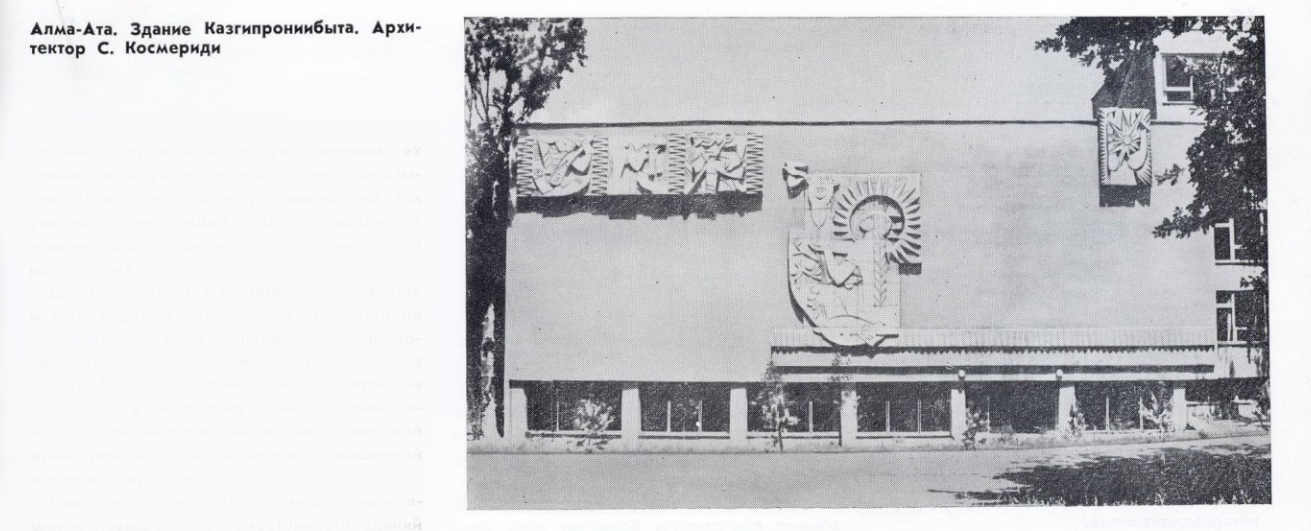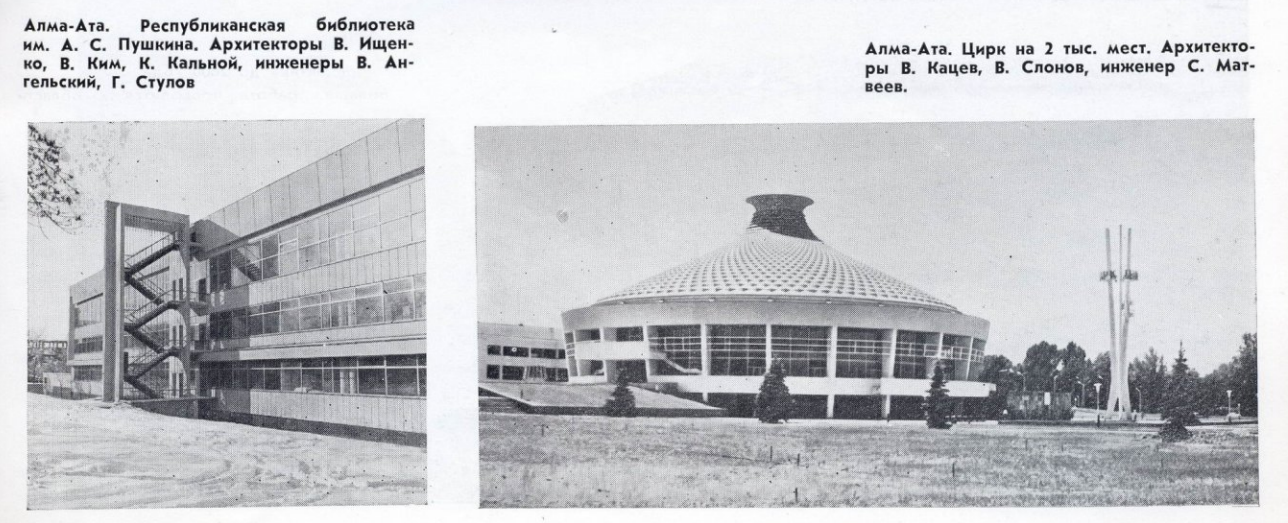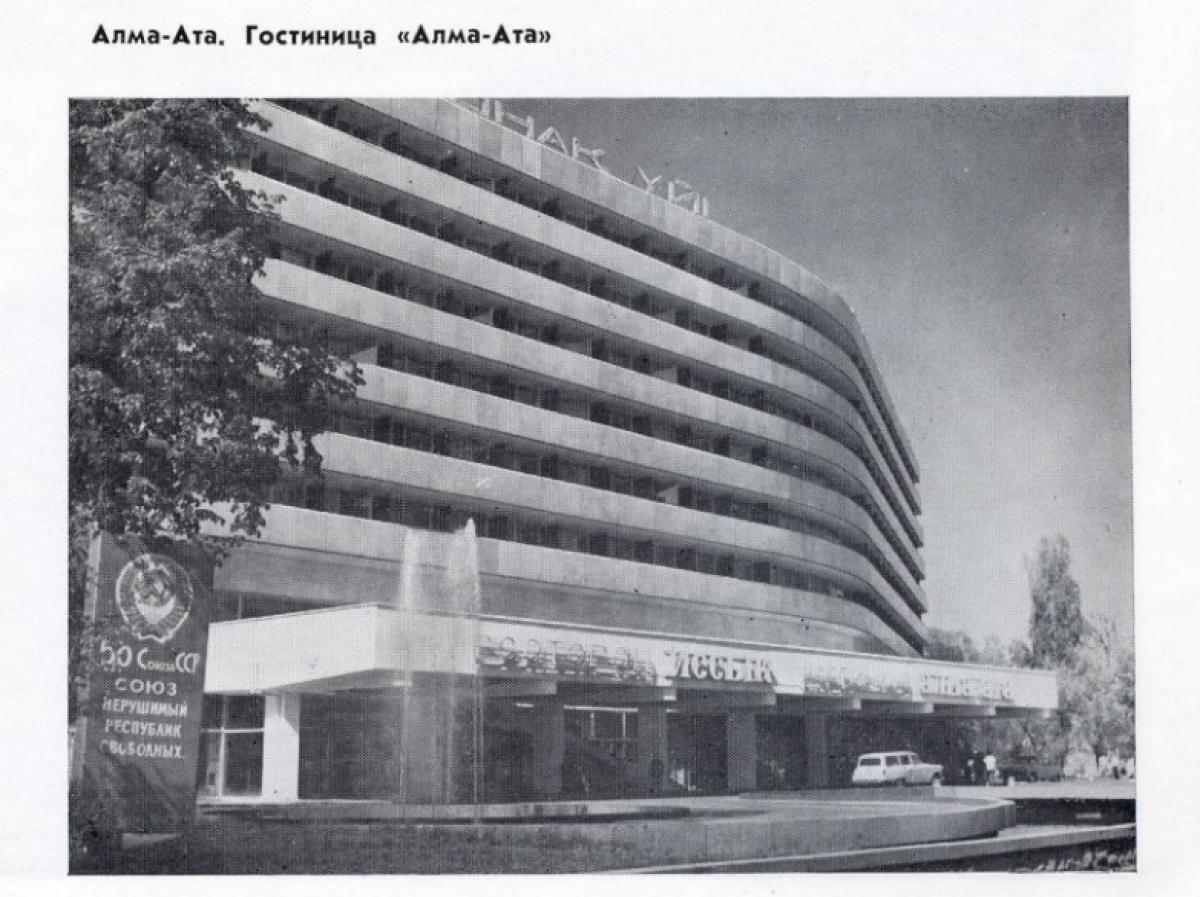
Kazakhstan of the Soviet era was rightly called the land of new buildings. The economically successful combination of mineral resources and water and energy resources put it in a prominent place among other republics of the USSR in terms of the number of facilities under construction, and in terms of capital investment per capita in the first place. According to all sources, almost 29 billion rubles of capital investments were allocated for the development of the national economy of the Kazakh CCP in the IX five - year plan-1.5 times more than in the eighth five-year plan. One-third of these funds were allocated for housing, cultural, household and communal construction, which formed the basis for the formation of cities, towns and other localities in the republic. The Qazaqstan Tarihy portal will tell you what this money was spent on.
Photos taken from the magazine "Architecture of the USSR" (December, 1972)
It is believed that Kazakhstan of the pre-Soviet era, although it possessed huge natural resources, was represented only by a small number of semi-artisanal enterprises for processing agricultural products, as well as mining enterprises that belonged mainly to foreign concessions. At that time, the country's mineral resources were very poorly exploited, and vast expanses of arable land remained undeveloped. At that time, more than 90% of the total population lived in rural areas, mainly in nomadic villages, and on the territory of 2.7 million square kilometers there were only 28 urban settlements. The post-revolutionary period was marked by huge changes in the economic and cultural life of Kazakhstan. In a relatively short historical period, Kazakhstan turned into a highly developed industrial and agrarian republic, and in 1971 the total volume of industrial production exceeded the pre-revolutionary one by more than 140 times. According to the national economic plan, 5034 million rubles were allocated only for housing construction in cities and rural areas (for all sources of financing), 33.4 million square meters of total living space were to be built. And this meant that almost a quarter of the population of the republic will receive new comfortable apartments.
Every year, the architectural appearance of cities and villages of the republic improved more and more significantly, and the level of their improvement and engineering equipment increased. So, in the VIII five-year plan, 14 cities received municipal water pipelines, almost 1.5 million apartments were gasified, 15 thousand km of paved roads and 400 km of railways were laid. The pace of rural electrification and gasification has increased markedly, and the network of schools, hospitals, clubs, children's institutions, shops, canteens, and other public service enterprises has expanded rapidly.
A large team of highly qualified designers and architects was formed and successfully worked in Kazakhstan. A significant contribution to architecture and urban planning was made by architects N. Ripinsky, A. Leppik, Seidalin, D. Kim, V. Katsev, L. Ukhobotov, T. Basenov, E. Melikov and others. Their works were known far beyond the borders of the republic. Constant work was carried out in the country to improve the design and estimate business, develop and strengthen the network of design and research organizations, improve the technical level of design, accelerate the implementation of scientific developments in the construction practice.
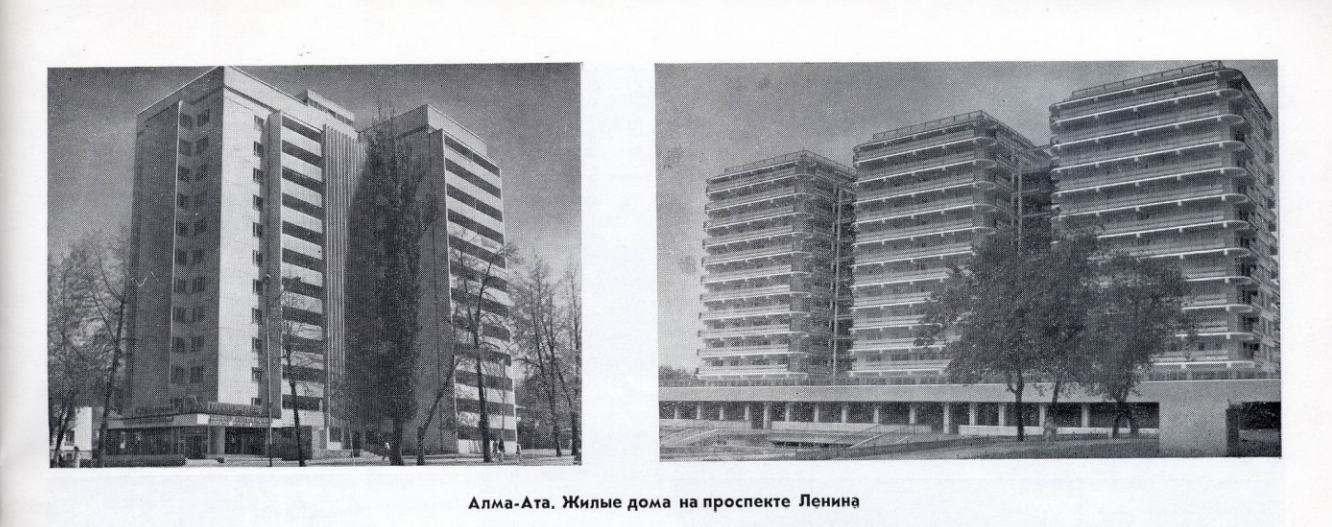
The development of design business in the republic began in the years of the first five-year plans. Already in 1948, there were six design organizations with a total of 294 employees. In 1959, there were already 29 of them with a total number of 8500 employees and a volume of project work for 17.7 million rubles per year.
Organizational and technical design organizations became especially strong in the 1970s. By 1972, there were 70 design and research organizations in the republic (including inter-republican ones), which employed more than 35 thousand scientists, designers and designers. They carried out design and survey work for housing and civil and agricultural construction, almost all the design of industrial enterprises, and also fulfilled many orders for foreign countries.
The main institutes Kazgorstroyproekt and Kazgiprosovkhozvodstroy provided constant assistance to project organizations of the republic, provided methodological guidance to their activities. Specialized design organizations for the design of public utilities, highways and bridges, consumer services enterprises, and construction projects on collective farms have significantly strengthened. One of the most important concerns of the republican bodies, regional executive committees and city executive committees, all architects was to improve the quality of development and architectural appearance of cities, working settlements and villages, improve their landscaping, create the best conditions for work, recreation and everyday life of the population.
It is necessary to mention, for example, the work of architects who created a number of remarkable buildings and architectural ensembles in Alma-Ata, Karaganda, Aktobe, Shevchenko, Chimkent, Pavlodar and other cities. A group of Kazakhstani architects and builders was awarded the CCCP State Prize for the creation of the V. I. Lenin Palace of Culture in Alma-Ata, and the All-Union Creative review competition awarded the prize for the Lenin Avenue development complex in Alma-Ata. Other works of architects of the republic were also awarded various types of incentives.
A lot of work was done by architects to provide cities with master plans, projects for detailed planning of residential areas and projects for building community centers. Taking into account the latest achievements of urban planning science, master plans were developed and the cities of Rudny, Shevchenko, Novy Uzen, Lisakovsk, Kentau, Sayak, and many villages were built on them, as well as the old cities were reconstructed. So, by 1972, out of 83 cities in the republic, 77 cities had approved master plans, and the rest were finishing design work.

Improving the architectural appearance of cities, providing them with general plans, as well as detailed planning and development projects, and forming public centers were under constant attention of the party and Soviet bodies of the republic. Thus, when considering the issues of improving the architectural appearance of cities in the Supreme Soviet of the Kazakh SSR, it was noted that during the construction and reconstruction of all regional centers and other cities of the republic, their development should have been carried out following the example of building Lenin Avenues in Alma-Ata, Aktobe and Tselinograd, the main highways in Chimkent and Ust-Kamenogorsk, i.e. large complexes. At the same time, the main condition was the creation of expressive architectural ensembles of public centers and residential areas, both according to standard projects and according to cost-effective individual ones, using unified structures. Such buildings gave a memorable appearance, a peculiar flavor and most fully met the modern requirements of urban planning.
Due to the multinational nature of Kazakhstan, an important condition for strengthening the fraternal family of Soviet peoples was the implementation of socialist transformations, economic and cultural construction, taking into account specific local conditions and national and everyday characteristics of individual nations and nationalities. In this regard, the architects and designers had a responsible and honorable task to take into account the peculiarities of the demographic composition of families of different nationalities, their way of life, and progressive national traditions in their projects. When designing, it was also necessary to take into account that Kazakhstan was located in four climatic regions and six subdistricts, and up to 20% of its territory, where more than one third of the total population of the republic lived, belonged to a zone with high seismic activity.
At the end of the 1960s, the volume of work on standard and experimental design, creation of new projects that meet different climatic and other specific conditions of various zones of Kazakhstan sharply increased in Kazakhstan. So, in 1971-1972, a series of projects of large-panel and frame-panel houses were developed, taking into account the construction conditions in Alma-Ata, on the Mangyshlak Peninsula and other regions of the republic. Projects of kindergartens of various capacities, schools, boarding schools and dormitories were created for districts with a seismicity of 9 points.
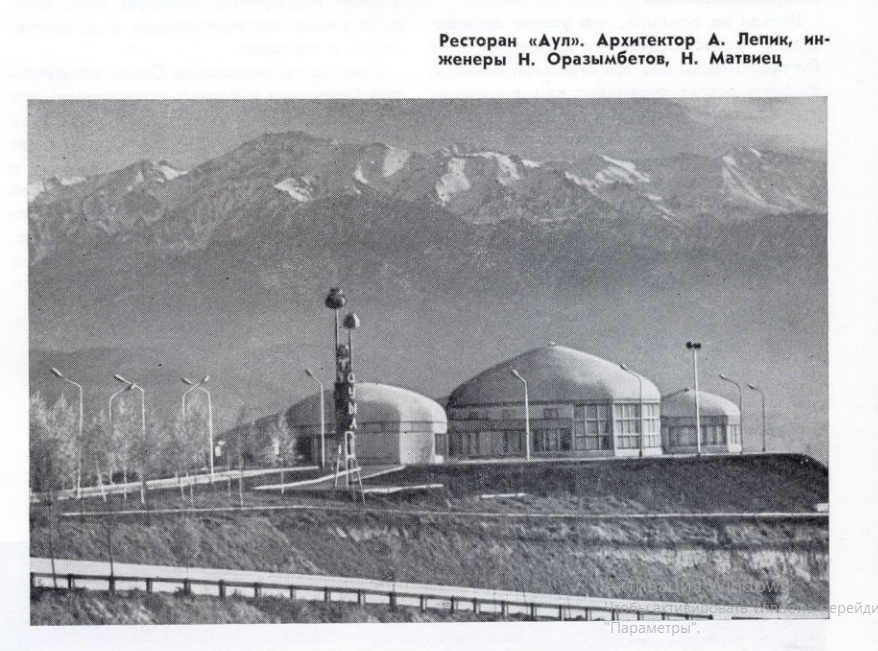
The use of scientific and technical actions in urban planning and planning has steadily expanded, and the economic and social impact has been confirmed in practice. Thus, with the involvement of leading institutions of the country, Kazakhstan actively worked to further improve the settlement systems in both industrial and urban and rural areas, and continued to develop district planning schemes taking into account the development of industrial areas and regional centers in the future until 2000.
A lot of work was carried out in the field of design and construction of earthquake-resistant buildings. For example, in Alma-Ata, the transition to the construction of multi-story frame and large-panel buildings that met the anti-seismic requirements of that time was already underway. The use of precast reinforced concrete structures of multi-storey earthquake-resistant buildings was accompanied by an enlargement of their elements and a reduction in the number of joints. At the same time, joints were arranged in those sections of structures where maximum forces from seismic impact did not occur.
Horizontal and spatial cross-shaped precast concrete elements were developed for the construction of the Alma-Ata Hotel and high-rise residential buildings on Lenin Avenue. In some buildings, a precast monolithic frame with rigid reinforcement and a steel frame with an increased degree of precastness were used.
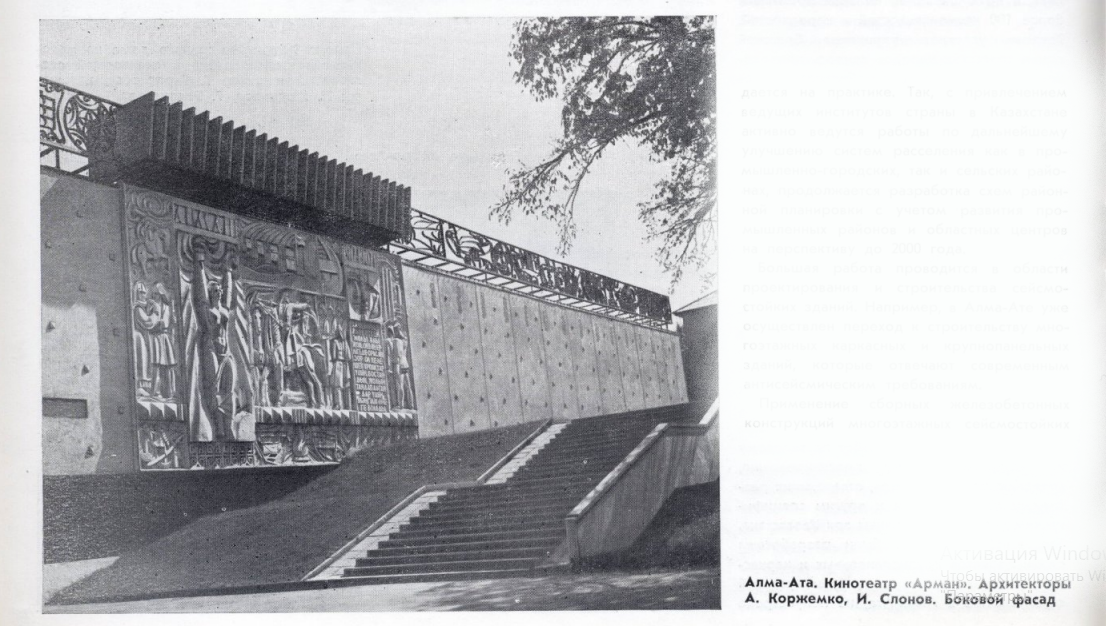
The most complete tasks of industrialization and improving the earthquake resistance of buildings were met by frame frames. A series of these structures has already been developed for a wide range of public buildings.
In recent years, the organization of scientific and technical information on construction has improved somewhat in the republic, the volume and quality of reference and information services for design, research and construction organizations have increased. The system of selective distribution of information is more widely used. In the practice of design and survey work, new technical means and mechanization of calculations using electronic computers are increasingly being used. All this ensures a higher quality of projects and an increase in the labor productivity of employees of these organizations.
Architects and builders of Soviet Kazakhstan, using the experience of the fraternal republics of the country, have achieved significant success in their creative work, they are worthy of the national holiday of the 50th anniversary of the formation of the USSR.


